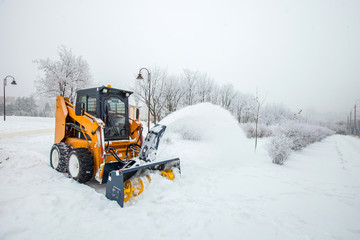
Snow removal is essential to keep sidewalks, entryways and parking lots safe during winter. It also helps to save time, money and reduce water pollution.
Snow crews are on high alert to clear designated trails and pretreat roads as soon as a winter storm begins. They might clear county trails and streets before residential neighborhoods are ready.
Snow removal is a crucial part of winter maintenance. It involves removing snow from sidewalks and parking lots so that people can easily get around.
Safety is always a top priority for snow removal crews and there are many measures that they can take to keep themselves, their equipment and anyone else who may be involved in their operation safe. It is also important to make sure that they have the proper equipment and training to ensure they are operating their machines safely.
In general, shoveling snow by hand is a physically demanding activity that requires constant attention to avoid injury. It can lead to back injuries and heart attacks, and it is best to push rather than lift snow when possible.
It is also recommended to drink plenty of water during snow removal so that the body has enough fluids and minerals to keep it functioning properly. It is also recommended to wear appropriate clothing for cold weather conditions, such as a winter hat, gloves and slip-resistant footwear.
Falls are the leading cause of worker fatalities and injuries in snow removal. Fall hazards can include falling off roof edges or through skylights, and falling from ladders and aerial lifts.
Workers may also face electrical hazards, such as electrocution from power lines or snow removal equipment. Taking steps to prevent these hazards can reduce the number of worker injuries and fatalities.
Employers must evaluate their snow removal operations and identify potential hazards to prevent injury. This means conducting a safety assessment of the worksite and using fall protection, if necessary.
For example, employers can use fall-protected ladders and aerial lifts to remove snow from roofs. They should also consider ways to limit the number of workers that must step onto rooftops.
Lastly, if employees are performing snow removal on roofs, they must follow all applicable OSHA standards. This includes the 1910 General Industry Standards and the 1926 Construction standards.
Snow plow operators play a vital role in making the roads safer for everyone during winter weather. These operators have to keep their heads up and watch for obstacles while they are working in the snow, as well as keep their eyes on the road ahead.
Winter weather has arrived, and it’s time to start thinking about SNOW REMOVAL. You’ll want to prepare your property before a snow storm hits, or it can pile up fast and linger into spring, causing serious damage and putting your employees and customers at risk for slip-and-fall accidents.
The first step is to check the forecast. This will give you a rough idea of how much snow is expected to fall. If it’s a light snowstorm, you can probably shovel off just an inch or two at a time, but if it’s a bigger storm you’ll need to clear a larger area.
Next, it’s important to know how long it’ll take you to clear off your property. You’ll need to factor in the amount of time you have for shoveling, as well as the size and type of vehicle you plan on using for transportation.
As a rule of thumb, you should clear off your sidewalks and walkways at least once a day, preferably twice or more, if possible. It’s also smart to stock up on ice melt and sand or kitty litter, to help you with the task.
Lastly, remember that it’s your responsibility to make sure that the snow you remove is properly cleared and swept away from public walkways and fire hydrants. Failure to do so can result in fines ranging from $100 to $350.